Can Almond Oil Reduce Dark Circles? How To Use It
Mix it with milk or other oils - learn all hacks to use this oil and combinations to try.
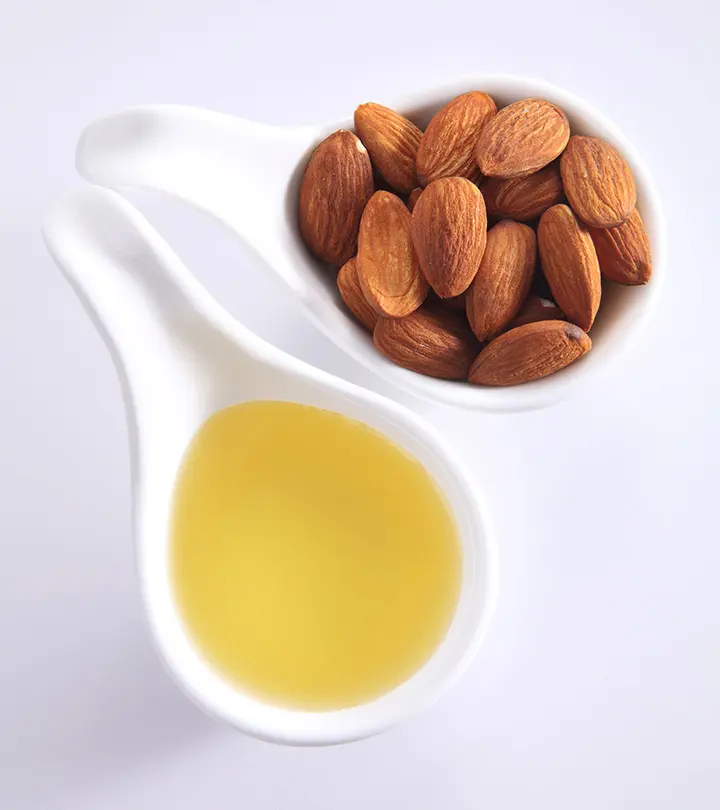
Image: ShutterStock
Dark circles make your eyes appear sunken and make your face look tired. While concealers can cover them, they cannot be a long-term solution. Why not try using almond oil for dark circles? The area around your eyes is thinner, and dark circles can also be a sign of neglect, moisture loss, and allergies. Almond oil contains beneficial fatty acids and can support the skin barrier, keep the area moisturized, and improve skin health. There are many other ways almond oil can help minimize dark circles and brighten the area around your eyes. Scroll down to understand how almond oil may work for dark circles and how to use it.
In This Article
Causes Of Dark Circles
- Fatigue: Insufficient sleep, overexertion, or even oversleeping may lead to puffy eyes and pale skin, accentuating dark circles (1).
- Age: Collagen production around the eyes decreases as you age and can reveal the dark blood vessels beneath the surface, making them more visible (2).
- Eye Strain: Extensive screen time may strain your eyes and dilate blood vessels, leading to dark circles.
- Dehydration: Inadequate hydration may make your skin appear pale and lackluster, giving your eyes a sunken look and darkening the surrounding skin (1).
- Genetic Factors: A family history of dark circles may predispose you to them.
- Sun Exposure: Prolonged sun exposure may prompt your skin to produce excess melanin, potentially leading to increased pigmentation around the eyes (3).
If you are wondering whether there is any way to get rid of dark circles, then yes there is —almond oil. Check out the next section for more information!
Key Takeaways
- Almond oil and its moisturizing properties can help treat dark circles and your delicate undereye skin.
- It helps brighten your undereye area and improves the skin barrier with beneficial fatty acids.
- Honey, rose water, olive oil, aloe vera, vaseline, castor oil are a few ingredients that, when used along with, can help enhance the beneficial effects of almond oil for your dark circles.

Understanding Almond Oil’s Role In Reducing Dark Circles
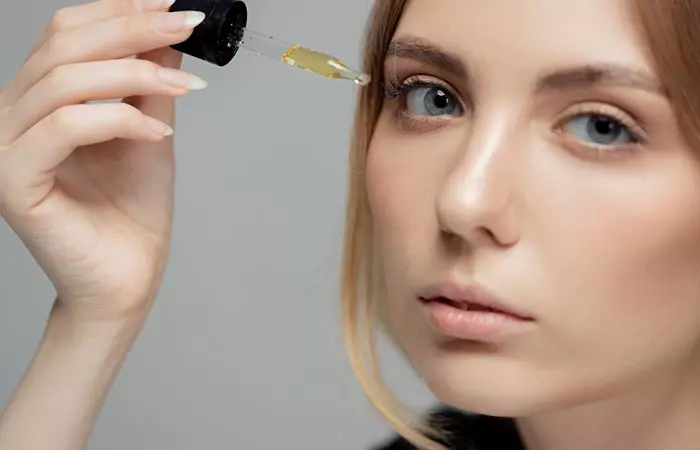
There is no scientific evidence stating the effectiveness of almond oil in reducing dark circles. However, almond oil benefits the skin in many ways. Anecdotal evidence claims that regular use of almond oil can help. Almond oil can promote skin health in different ways:
1. Almond Oil Keeps The Skin Hydrated
Dehydration is one reason your skin looks dull. As the area around your eyes is thinner than the rest of the face, it can easily get dehydrated, making the dark blood vessels more apparent. This leads to dark circles under eyes. Almond oil is an excellent emollienti A quality (of a cream or oil) to soften the skin by reducing dryness. (4). It can keep the delicate skin around your eyes hydrated and plump and may help minimize dark circles.
 Quick Tip
Quick Tip2. Almond Oil Can Brighten Your Skin
The emollient properties of the oil can help improve skin tone and complexion with regular massaging (4). This property may also help reduce dark circles.
A blogger shares how she used sweet almond oil to improve the skin under her eyes. She writes, “The sweet almond oil definitely made a significant difference. Not only has it subsided the hyperpigmentation, but it has decreased the appearance of fine lines (i).”
3. It Prevents Damage By UV Rays
Exposure to UV rays can worsen your dark circles by increasing melanini A group of pigments that provide color to the skin, hair, and eyes. production and accelerating collagen breakdown.
Topical almond oil was shown to prevent structural damage caused by UV rays in mice studies (5).
 Quick Tip
Quick Tip4. It Protects The Skin Barrier
Transepidermal Water Loss (TEWL) is one of the reasons for dry skin. When the skin barrier is compromised, the delicate area around your eyes becomes thinner and drier, causing dark circles to become more prominent. Moisturizing the skin and minimizing TEWL can help prevent dark circles. This is where nourishing your skin with almond oil can help (6).
These are some reasons almond oil can help reduce dark circles. However, you have to use it continuously to get any results. Also, ensure you are using cold-pressed and organic almond oil. Unrefined and organic oil contains maximum nutrients and is good for the skin.
How To Use Almond Oil For Dark Circles
1. Honey And Almond Oil

Honey keeps the skin young and hydrated. It is an emollient and a humectant. It soothes the skin and also prevents wrinkle formation (7).
You Will Need
- 1/2 teaspoon of honey
- 1/2 teaspoon of almond oil
What You Have To Do
- Mix the honey and almond oil. Blend well.
- Apply this mixture under your eyes before going to sleep.
How Often You Should Do This
Repeat this every night.
2. Rose Water And Almond Oil
Rosewater has an anti-inflammatory effect on your skin. It also feels extremely soothing on your skin and can rejuvenate tired eyes (8).
You Will Need
- A few drops of almond oil
- Rosewater
- A cotton ball
What You Have To Do
- Dip the cotton ball in the rose water and apply it under your eyes.
- Let it dry naturally.
- Once the rosewater has dried, apply the almond oil and massage for 2-3 minutes.
- Leave the oil on overnight.
How Often You Should Do This
Do this every day before going to bed.
3. Olive Oil And Almond Oil
Olive oil is rich in essential fatty acids along with oleic and linoleic acidsi A polyunsaturated fatty acid in edible oils and often used as an emollient. (5). These antioxidants have an anti-inflammatory effect on the skin. They may also improve skin hydration and keep it nourished.
You Will Need
- 1/2 teaspoon of extra virgin olive oil
- 1/2 teaspoon of almond oil
What You Have To Do
- Mix the two oils.
- Take a few drops of the blend between your fingertips.
- Rub your fingers together to warm the oil.
- Apply this blend under your eyes and on the eyelids very carefully.
- Massage in circular motions for 2-3 minutes.
- Leave the oil blend on overnight.
Note:
Olive oil may increase transepidermal water loss and irritate dry skin. Hence, consult your doctor before using it on a delicate area like under the eyes.
How Often You Should Do This
Do this every day.
4. Castor Oil And Almond Oil
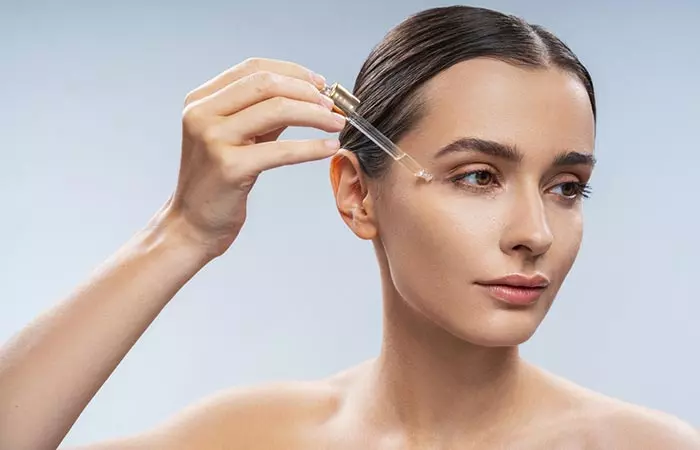
The ricinoleic acidi An unsaturated fatty acid that moisturizes the skin. found in castor oil acts as a skin-conditioning agent (9).
You Will Need
- 1 teaspoon of castor oil
- 1 teaspoon of almond oil
What You Have To Do
- Mix the oils and apply the mixture to the under-eye area.
- Keep it on for as long as possible.
How Often You Should Do This
This is best done at night, before going to bed.
5. Vaseline And Almond Oil
Vaseline locks in the moisture in the skin, which alleviates skin dullness and prevents water loss (10). This helps to keep the skin hydrated and may reduce dark circles.
You Will Need
- A pea-sized amount of Vaseline
- A few drops of almond oil
What You Have To Do
- Massage the almond oil around your eyes.
- Wait for 2-3 minutes and then massage the area with Vaseline.
- Leave this on overnight.
- Apply the remaining Vaseline around the lips to prevent fine lines and wrinkles.
How Often You Should Do This
Repeat this every night.
6. Almond Oil And Cold Milk
Milk contains lactic acidi A type of alpha-hydroxy acid that removes dead skin cells from the skin. , which may help reduce dark circles (11). Lactic acid also has exfoliant and hydrating properties that may promote skin health.
You Will Need
- 1 teaspoon of almond oil
- A few drops of cold milk
What You Have To Do
- Add the cold milk to the oil and mix well.
- Apply it under your eyes and keep it on overnight.
- Rinse with cool water in the morning.
How Often You Should Do This
Do this every alternate night.
Caution: Lemon juice can dry the skin out. Use it in moderation and with oil or other moisturizing agents. If it causes irritation, discontinue using it.
7. Aloe Vera And Almond Oil
Aloe vera replenishes and rejuvenates the skin by providing essential vitamins, minerals, and fatty acids. It also contains natural enzymes and antioxidants that can help prevent the damage caused by free radicals (12).
You Will Need
- 1/2 teaspoon of aloe vera gel
- 1/2 teaspoon of almond oil
What You Have To Do
- Mix equal quantities of fresh aloe vera gel and almond oil.
- Apply this mixture under your eyes and keep it on for an hour.
- Rinse with cool water.
How Often You Should Do This
Do this once at bedtime. You can also use this remedy as an overnight under-eye mask.
8. Almond Oil And Turmeric
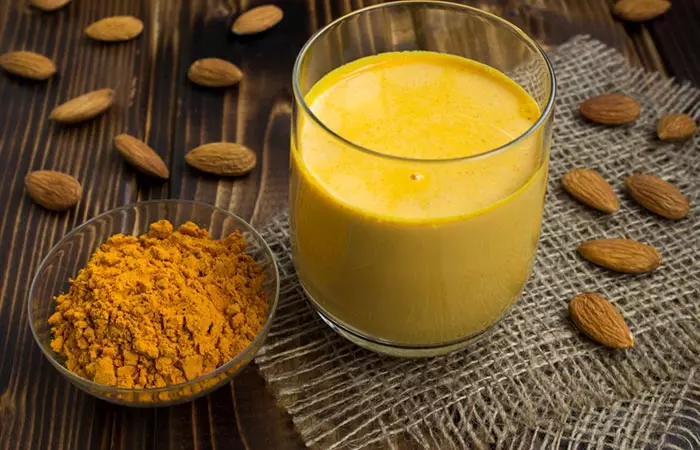
Turmeric contains curcumin that acts as an antioxidant and protects the skin cells from oxidative damage (13). This remedy can help even out the skin tone under the eyes and may make it lighter and brighter.
You Will Need
- 1 teaspoon of almond oil
- A pinch of turmeric powder
- A teaspoon of curd (to avoid overdosing of turmeric)
What You Have To Do
- Mix the turmeric with the almond oil. Add curd to the mixture and apply this under the eyes.
- Let this sit for 10-15 minutes and then rinse with water.
How Often You Should Do This
Do this once a week.
9. Vitamin E Oil And Almond Oil
Topical vitamin E is often used as an ingredient in OTC skin anti-aging products. This antioxidant protects your skin and has been proven to be moderately effective in reducing dark circles (along with other ingredients) (14).
You Will Need
- 2-3 drops of vitamin E oil
- 2-3 drops of almond oil
What You Have To Do
- Mix both the oils.
- Apply the mixture gently to the area around your eyes.
- Massage for a minute.
- Leave it on overnight.
How Often You Should Do This
Every night before going to bed.
10. Almond Oil And Milk Powder
Milk contains lactic acid, which is known to have a moisture-binding property and is a potent antioxidant (15). This may help in lightening dark circles.
You Will Need
- ½ teaspoon of almond oil
- ½ teaspoon of regular full fat milk
What You Have To Do
- Mix both the ingredients.
- Gently apply the paste around your eyes and massage for a minute.
- Leave it on for 15- 20 minutes or until it dries.
- Wash it off and follow up with a good eye cream.
How Often You Should Do This
Once every day before going to bed.
These are some easy recipes that you can easily follow at home without any hassle. However, before using almond oil, you need to be aware of a few risk factors associated with it.
Risks Factors And Precautions

Topical almond oil is usually considered safe for the skin unless you have a nut allergy. If you are allergic to it, it may cause:
- Skin irritation
- Burning sensation
- Breakouts
There is very little scientific evidence available to establish these effects. However, almonds are known to trigger certain allergies (16). Hence, some believe the oil may also act as an allergen in certain cases.
Before you use almond oil on your skin, make sure
- To do a patch test to determine if it suits your skin.
- Buy a good quality cold-pressed almond oil. Avoid buying refined or processed almond oils as they might contain other additives.
- Gently massage the oil on the skin and avoid rubbing the delicate under-eye area.
- Use a small amount of the oil to prevent irritation.
If you are looking for a good quality almond oil, here is our suggestion.
Infographic: 4 Easy DIYs To Get Rid Of Dark Circles
Be it stress or lack of sleep, dark circles have become a part of you. The good news is a little bit of almond oil with a few simple kitchen ingredients can help you bid goodbye to those pesky under eye bags and puffy eyes. We have rounded up the 4 easy DIYs to get rid of dark circles in the infographic below. Scroll down to know more!
Some thing wrong with infographic shortcode. please verify shortcode syntax
Best Almond Oil Brand For Dark Circles
Applying almond oil alone won’t help. Along with natural remedies you should regulate your overall lifestyle and diet to enhance facial health and beauty. Follow a balanced diet, keep yourself hydrated, and get adequate sleep. If your body is rested properly and feels replenished from within, it will automatically reflect on your face. Also, try to cut down your stress levels and dedicate a certain time of your day for skincare. You will eventually see those dark circles fading.
Frequently Asked Questions
Can almond oil damage eyes?
In most cases, it does not cause any damage to your eyes or the skin around your eyes. But if it gets into your eyes, it may cause blurred vision for a few seconds. However, if you have a vision issue, consult your doctor before using almond oil for your eyes.
How long does almond oil take to remove dark circles?
You may notice a visible lightening of dark circles after two or three weeks of consistent usage.
How does almond oil compare to other natural or synthetic ingredients commonly used for dark circles, such as vitamin C or caffeine?
Unlike caffeine and vitamin C, almond oil does not directly lighten dark circles by inhibiting melanogenesis. Instead, its anti-inflammatory, sclerosant, and healing properties help reduce puffiness and the appearance of veins around the eyes. This automatically reduces the appearance of your dark circles.
Is almond oil good for wrinkles around the eyes?
As per anecdotal evidence, almond oil helps reduce fine lines and stretch marks. Hence, regular application of almond oil may help smoothen the skin and reduce wrinkles around the eyes.
Can almond oil clog pores?
Almond oil has a low comedogenic score, which means there is a low possibility that almond oil will clog your skin pores.
Almond oil is a natural remedy for dark circles. Watch the video below to learn how almond oil can help reduce the appearance of dark circles and improve your skin’s health. Tune in now!
Illustration: How To Use Almond Oil To Reduce Dark Circles

Image: Stable Diffusion/StyleCraze Design Team
Personal Experience: Source
StyleCraze's articles are interwoven with authentic personal narratives that provide depth and resonance to our content. Below are the sources of the personal accounts referenced in this article.
i. The Road to Curing Dark Eye Circles Starts With Sweet Almond Oilhttps://learningtolivewithlove.wordpress.com/2013/05/14/the-road-to-curing-dark-eye-circles-starts-with-sweet-almond-oil/
References
Articles on StyleCraze are backed by verified information from peer-reviewed and academic research papers, reputed organizations, research institutions, and medical associations to ensure accuracy and relevance. Read our editorial policy to learn more.
- Identification Of Three Key Factors Contributing To The Aetiology Of Dark Circles By Clinical And Instrumental Assessments Of The Infraorbital Region
https://www.ncbi.nlm.nih.gov/pmc/articles/PMC6927230/ - Decreased Collagen Production in Chronologically Aged Skin
https://www.ncbi.nlm.nih.gov/pmc/articles/PMC1606623/ - Skin Pigmentation Types, Causes and Treatment—A Review
https://www.ncbi.nlm.nih.gov/pmc/articles/PMC10304091/ - Almond Oil, ScienceDirect.
https://www.sciencedirect.com/topics/agricultural-and-biological-sciences/almond-oil - Anti-Inflammatory and Skin Barrier Repair Effects of Topical Application of Some Plant Oils, International Journal of Molecular Sciences, US National Library of Medicine, National Institutes of Health.
https://www.ncbi.nlm.nih.gov/pmc/articles/PMC5796020/ - Multi-Center Randomized Clinical Study of The Effects of Natural Oils on Xerosis and Skin Barrier Properties, Skin, The Journal of Cutaneous Medicine.
https://skin.dermsquared.com/skin/index.php/skin/article/view/351 - Honey in dermatology and skin care: a review., Journal of Cosmetic Dermatology, US National Library of Medicine, National Institutes of Health.
https://pubmed.ncbi.nlm.nih.gov/24305429/ - Pharmacological Effects of Rosa Damascena, Iranian Journal of Basic Medical Sciences, US National Library of Medicine, National Institutes of Health.
https://www.ncbi.nlm.nih.gov/pmc/articles/PMC3586833/ - Final report on the safety assessment of Ricinus Communis (Castor) Seed Oil, Hydrogenated Castor Oil, Glyceryl Ricinoleate, Glyceryl Ricinoleate SE, Ricinoleic Acid, Potassium Ricinoleate, Sodium Ricinoleate, Zinc Ricinoleate, Cetyl Ricinoleate, Ethyl Ricinoleate, Glycol Ricinoleate, Isopropyl Ricinoleate, Methyl Ricinoleate, and Octyldodecyl Ricinoleate., International Journal of Toxicology, US National Library of Medicine, National Institutes of Health.
https://pubmed.ncbi.nlm.nih.gov/18080873/ - Effects of petrolatum on stratum corneum structure and function., Journal of American Academy of Dermatology, US National Library of Medicine, National Institutes of Health.
https://pubmed.ncbi.nlm.nih.gov/1564142/ - The Roles of Vitamin C in Skin Health, Nutrients, US National Library of Medicine, National Institutes of Health.
https://www.ncbi.nlm.nih.gov/pmc/articles/PMC5579659/ - Aloe Vera: A Short Review, Indian Journal of Dermatology, US National Library of Medicine, National Institutes of Health.
https://www.ncbi.nlm.nih.gov/pmc/articles/PMC2763764/ - Beneficial role of curcumin in skin diseases, Advances in Experimental Medicine and Biology, US National Library of Medicine, National Institutes of Health.
https://pubmed.ncbi.nlm.nih.gov/17569219/ - Vitamin E in dermatology, Indian Dermatology Online Journal, US National Library of Medicine, National Institutes of Health.
https://www.ncbi.nlm.nih.gov/pmc/articles/PMC4976416/ - Lactic and lactobionic acids as typically moisturizing compounds. International Journal of Dermatology, US National Library of Medicine, National Institutes of Health.
https://pubmed.ncbi.nlm.nih.gov/30270529/ - Almond Allergens: Molecular Characterization, Detection, and Clinical Relevance, Journal of Agricultural and Food Chemistry, US National Library of Medicine, National Institutes of Health.
https://pubmed.ncbi.nlm.nih.gov/22260748/
Read full bio of Dr. Sonam Jeswani Ramrakhiani
Read full bio of Ramona Sinha
Read full bio of Eshna Das
Read full bio of Shiboli Chakraborti






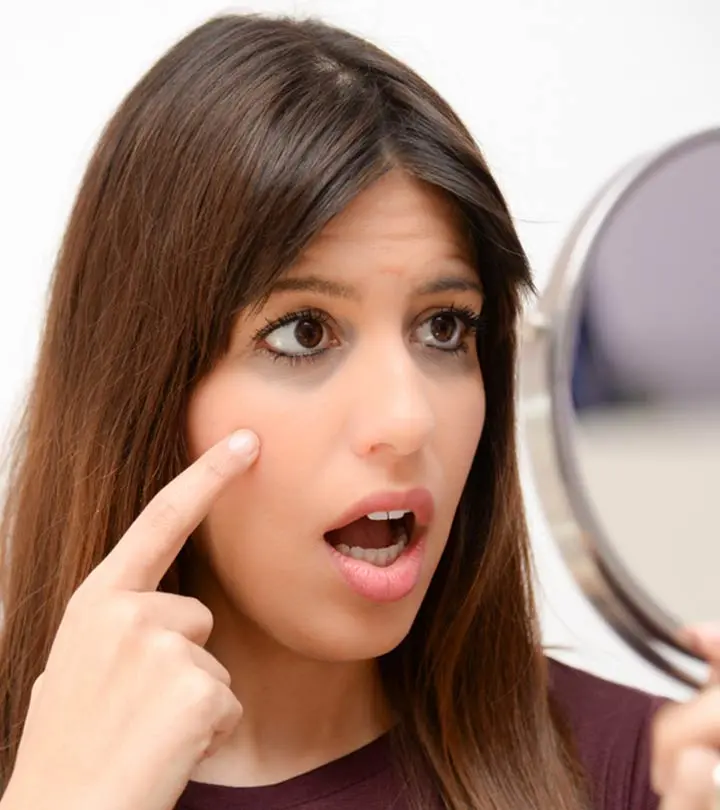

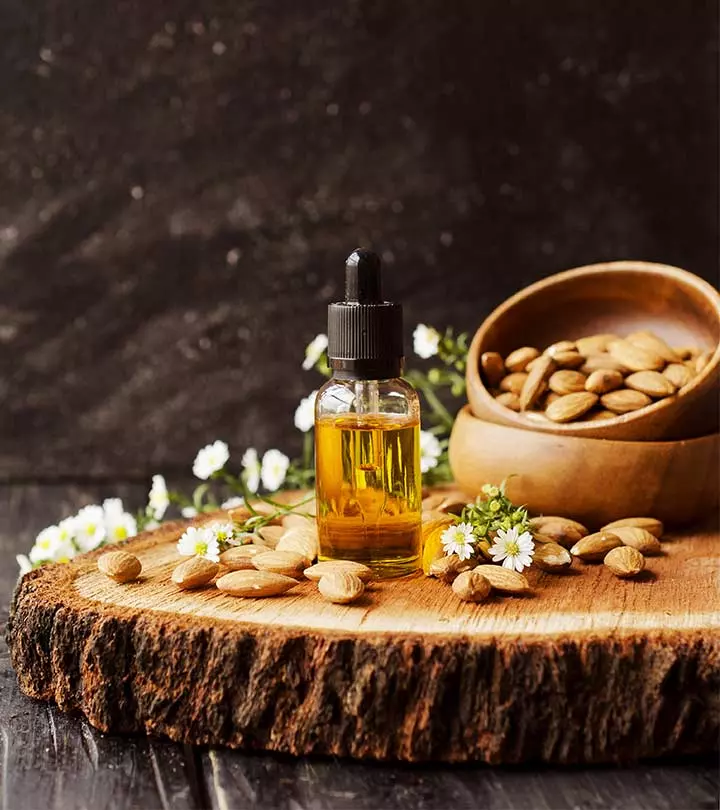
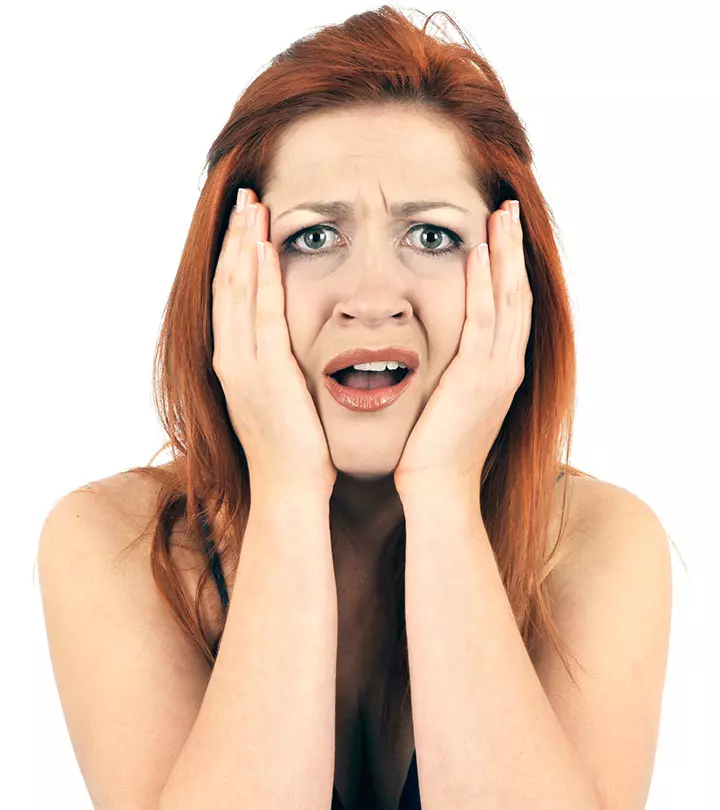

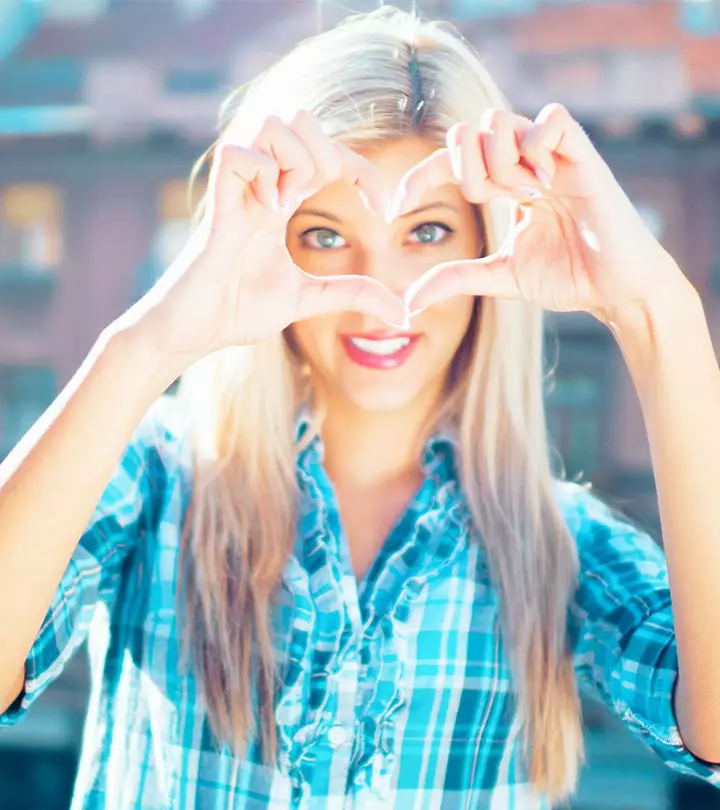



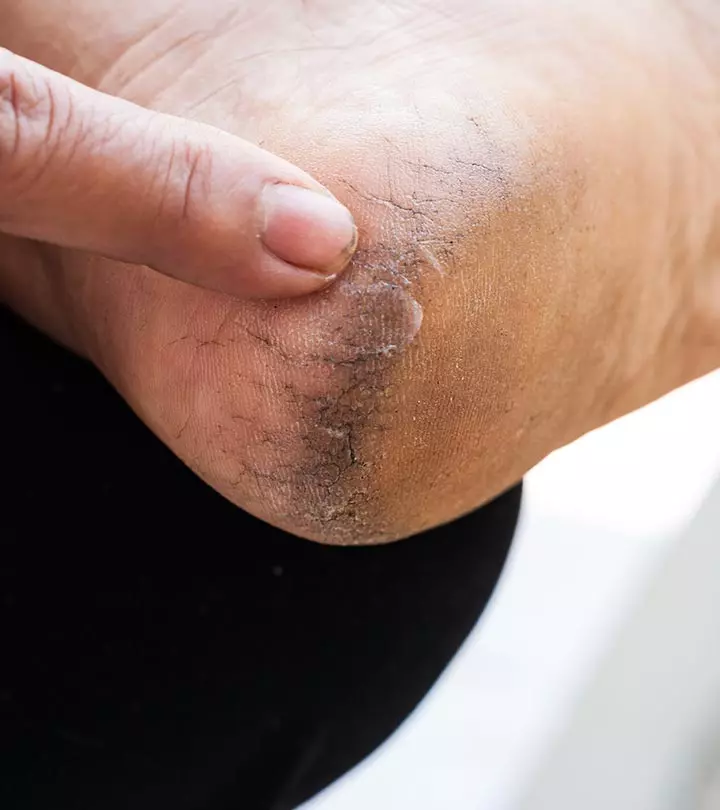

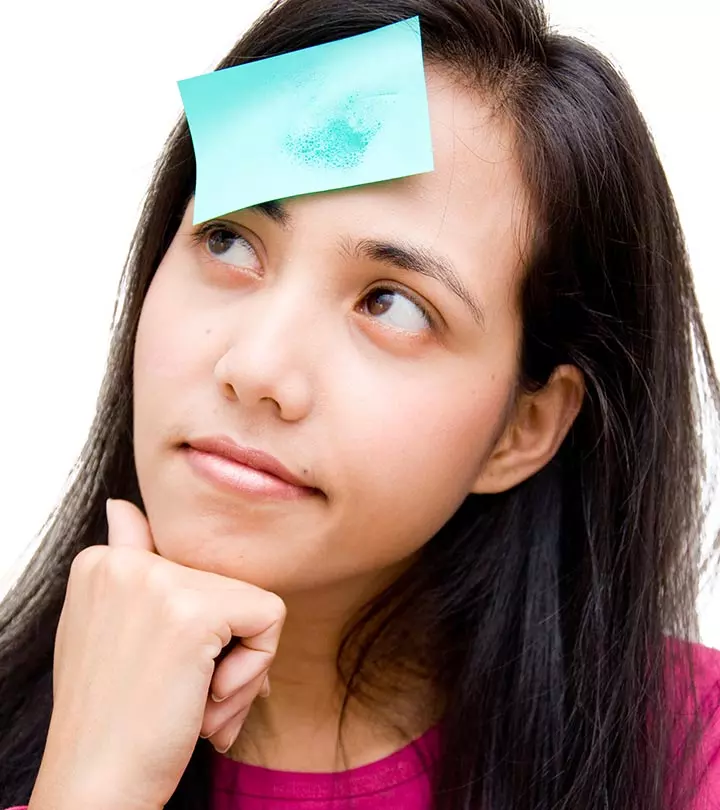
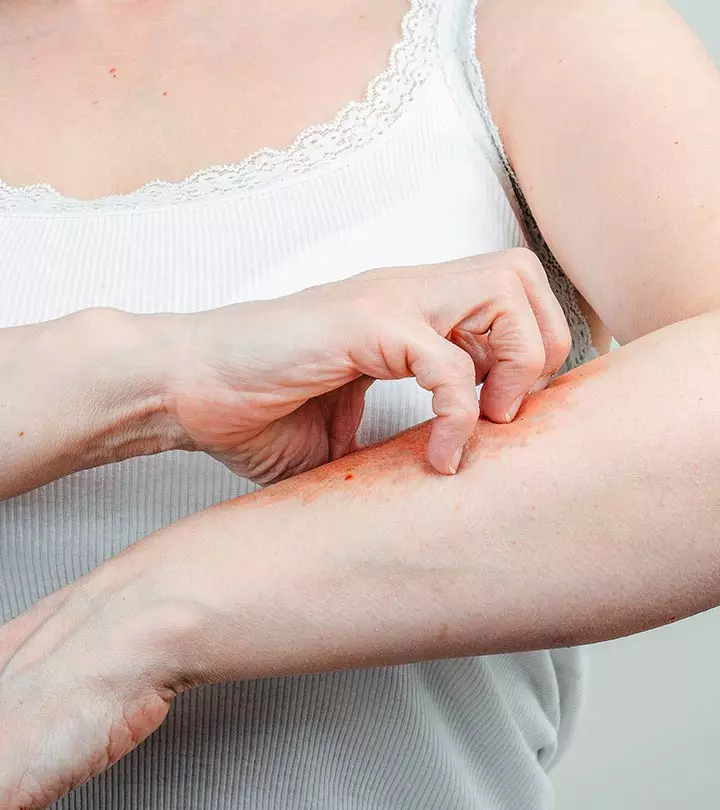






Community Experiences
Join the conversation and become a part of our empowering community! Share your stories, experiences, and insights to connect with other beauty, lifestyle, and health enthusiasts.